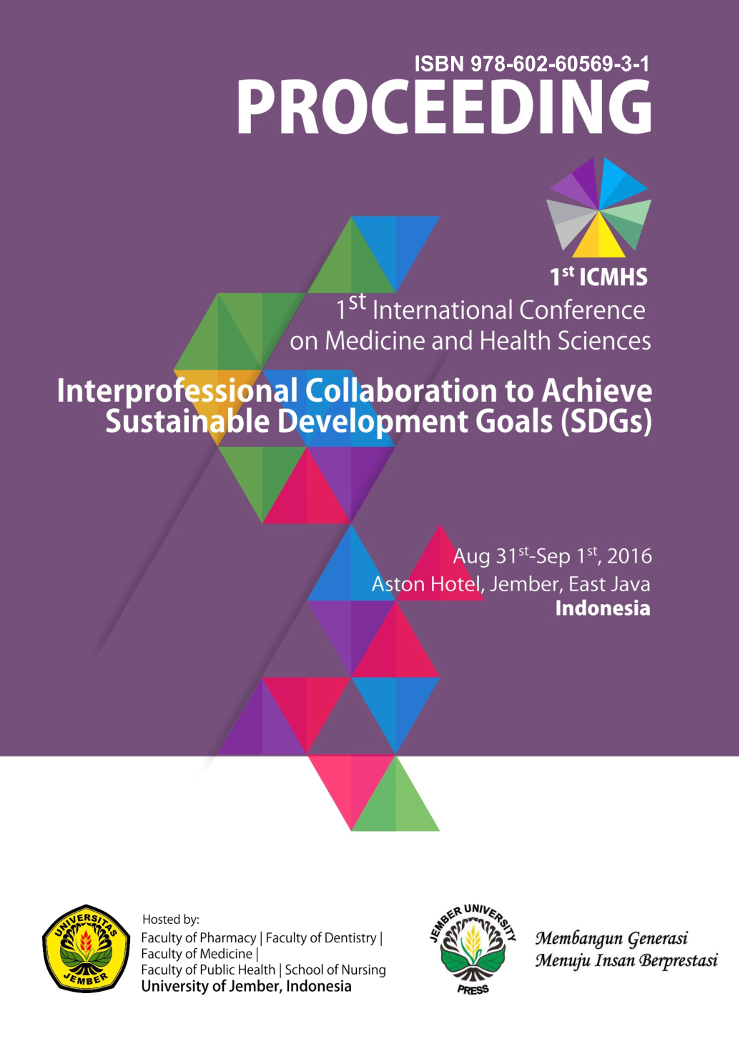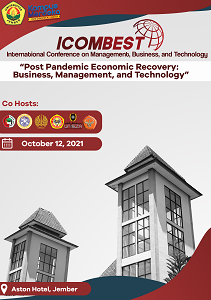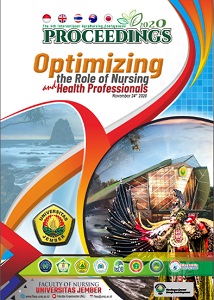HOW TO MAINTAIN HIGH QUALITY CARDIOPULMONARY RESUSCITATION IN ADULTS : LITERATURE REVIEW
Abstract
Intra-Hospital Cardiac Arrest (IHCA) incidence isquite high and varies with an average of 3.8 to 13.1
per 1000 patient. Most IHCA (60%) due to heart
problems such as pulseless electrical activity (PEA),
asystole, and the combined ventricular fibrillationventricular
tachycardia. While, the cause IHCA by
hypoxia about 30% (Becker, Aufderheide, &
Graham, 2015). The mortality rate are recorded
very high. America Heart Association (AHA) stated
that only 14% of adults and 27% of children who
survive after experiencing IHCA (Morrison, 2013).
Cardiopulmonary resuscitation (CPR) is one of the
most important emergency actions in lifethreatining
conditions. The performance of
cardiopulmonary resuscitation has an important
position in the chain of survival, but despite new
techniques and technology the survival rates from
cardiac arrest are still low and the incidence of inhospital
cardiac arrest is rarely reported in the
literature. Cardiopulmonary resuscitation is a
complex of emergency procedures, if that
performed correctly, can provide the necessary
minimum of circulation until return of spontaneous
circulation (ROSC) to patients with sudden cardiac
arrest (Stiell, et. al., 2012). The high incidence, low
rate of survival, and unpredictability of cardiac
arrest makes it a grave public health issue and a
medical emergency. The application of CPR plays a
critical role in saving lives from cardiac arrest in the
hospital, and chest compression is the first part to
plays a key role in CPR. (Chen, et al, 2015). Highquality
chest compressions of sufficient depth and
rate with full recoil of the chest between
compressions and avoidance of interruptions are
crucial to patient survival. The efficiency of CPR in
decreasing the death rate from avertable causes is
a very important factor. However there are
relatively few data available on the efficiency of
cardiopulmonary resuscitation in hospitals, which
play an essential role in the chain of survival.
Despite the fact that the cardiopulmonary
resuscitation was introduced more than 50 years
ago, the survival rate is still relatively low and there
is no trend of improvement of the situation
observed, although the technologies have
developed rapidly (Neumar, et.al., 2015).
The survival of patients with cardiac arrest
depends on the quality of CPR is given. The success
of CPR can be seen from the results whether the
patient is awake and back to life with normal
function or only slightly deformed, conscious and
returned with moderate disabilities, unconscious
with severe disabilities, coma or vegetative state,
brain death, or death from other causes
(Lallestedt, 2011).
Although resuscitation guidelines provide a logical,
sequential algorithmic approach, they have mainly
emphasized technical tasks performed by
individual rescuers and have not addressed issues
of adapting to the complex nature of most actual
resuscitations. Part of this complexity relates to
the fact that in a healthcare environment
resuscitations are usually performed by teams of
responders, not by isolated rescuers (Bhanji, et.al.,
2011). Therefore, high quality CPR must be applied
in each treatment in cardiac arrest by using
methods and best performance to maintain the
quality of life of patients.
Published
2017-01-27
How to Cite
SAPUAN, Sapuan.
HOW TO MAINTAIN HIGH QUALITY CARDIOPULMONARY RESUSCITATION IN ADULTS : LITERATURE REVIEW.
UNEJ e-Proceeding, [S.l.], p. 270-274, jan. 2017.
Available at: <https://jurnal.unej.ac.id/index.php/prosiding/article/view/3926>. Date accessed: 22 dec. 2024.
Section
General









